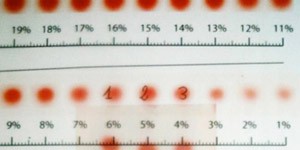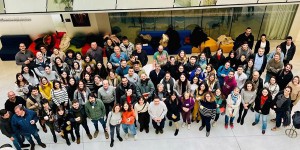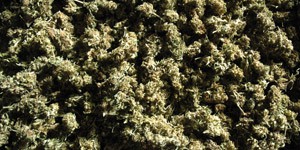By Manuel Perez Moreno

Bachelor of Pharmacy from the University of Alcalá de Henares and Doctor Cum Laude from the Complutense University of Madrid. Professor of Pharmacology and Pharmaceutical Chemistry. Author of articles in international journals, book chapters and talks and conferences on drugs of abuse.
He has developed his professional life between the Pharmaceutical Industry, the Hospital Pharmacy, the Teaching and the Pharmacy Office.
Passionate about the world of Cannabis and the pharmacological properties of the plant, he has done work on adulteration and contamination of cannabis derivatives.
Does marijuana in Madrid present fungal contamination?
What are the cannabinoids and their concentrations in the marijuana that is acquired on the streets of the capital of Spain?
Can marijuana acquired in Madrid be used as a phytotherapeutic product?
Throughout 2020, Dr Manuel Pérez Moreno and the Technical Director of the Fundación CANNA, Ignacio García, were dedicated to analysing the marijuana sold in the capital of Spain.
Streets, parks, premises and apartments of 18 of the capital's 21 districts were visited to acquire, as any citizen could do, samples that were later analysed.
A total of 40 samples, collected in 12 months and in different places, were subjected to microbiological and physical-chemical analysis, in order to know exactly what is sold and what is consumed in Madrid. To achieve this, the researchers had the support and advice of professors and qualified personnel from three universities: the Complutense University of Madrid, the University of Extremadura and the Alfonso X el sabio University.
Historically, cannabis derivatives have been known for more than 5000 years. The first records are found in ancient China and, since then, the main civilisations (Indian, Persian, Egyptian, Greek, Roman and Arabic) have used them throughout history for therapeutic, religious and recreational purposes.
At present, cannabis derivatives are the most widely used illegal drugs of abuse in Spain and the EU. This circumstance of illegality means that producers, transporters, distributors and sellers are not subject to any type of code of good practices, nor to any quality control by the health and administrative authorities. Therefore, these scientists believed it necessary to carry out this study and thus reveal what is really being acquired and consumed.
Today, the main use of marijuana and, by extension, derivatives of cannabis is recreational, although it is also used to enhance creativity due to its therapeutic effect (analgesic, anti-inflammatory, antispasmodic, etc.) and to alleviate the effects secondary to aggressive therapies (nausea, vomiting, lack of appetite, mood, etc.). These side effects are aggravating in people with a fairly weakened immune system and who are forced to acquire marijuana on the street, due to the impossibility of being able to obtain cannabis that is certified with a health record.
The presence of a high fungal load or the growth of toxigenic fungi in marijuana invalidates it for consumption, making it fraudulent for the consumer. Also, if it is taken into account that marijuana is consumed by healthy people as well as a significant number of sick people, the presence of a high fungal load in the samples or the growth of toxigenic fungi could trigger a serious public health problem.
Another important aspect to take into account in the marijuana acquired and consumed in the city of Madrid was the presence and concentration of cannabinoids. This study takes into account that, although more than 70 phytocannabinoids are generated in the plant, in addition to terpenes and flavonoids that are all very important in the use of marijuana as a herbal medicine (entourage effect), the three most important were analysed; THC, CBD and the oxidation product of the first, CBN.
The microbiological analysis consisted of the seeding, growth and subsequent identification of each and every one of the fungal genera that appeared in each sample, as well as their concentration per gram of sample. While the physical/chemical analysis was carried out to determine the main cannabinoids and their concentration in each sample, using acidic patterns of the main cannabinoids were used in a new way, thus obtaining results that are closer to reality than using neutral patterns, as was the traditional method in gas chromatography with flame ionisation, which was the chosen analysis technique.
After the analyses, the researchers were able to verify the degree of fungal contamination in the samples. Fungi of the Penicillium, Mucor and Aspergillus genus disproportionately contaminated the samples to the extent that 62.5% of the samples analysed were not suitable for consumption. Regarding the concentration of active principles, the researchers observed that the average concentration of the samples in terms of THC was higher than 15%, some samples reaching 20%, while the concentration of CBD and CBN in the vast majority of the samples did not reach 1.2%. These results were subsequently compared with others obtained in other areas of Spain and also with other studies carried out in other European Union countries, with the result that the marijuana that can be purchased in Madrid is more powerful than that of the rest of the EU.
As a consequence of this study, these researchers reached the following conclusions:
- The fungal contamination detected in a high percentage of the samples makes it possible to classify the marijuana acquired on the streets of Madrid as not suitable for consumption in more than half of the cases.
- The marijuana acquired in Madrid capital has low or no CBD concentration and has a THC concentration higher than 15%.
- The consumption of marijuana acquired on the street in Madrid capital, in addition to being fraudulent for the consumer, can become a serious Public Health problem in most cases for healthy people and for people with previous pathologies.


